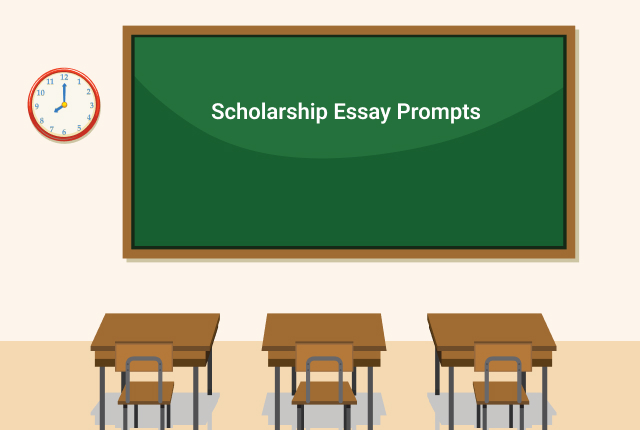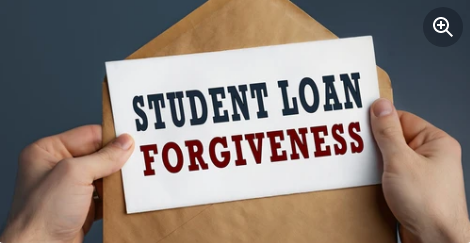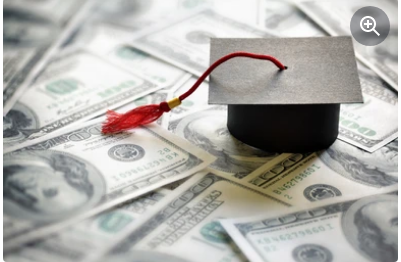Student Loan
Everything you need to know before you apply for ECMC Student Loan
The U.S. Department of Education or a guaranty agency served as your lender if you took out federal student loans prior to 2011 and attended school there.
Your payments are not handled by the lender, and neither do they respond to inquiries about your student loan debt or alter your loan payback schedule.
Instead, your loan servicer is responsible for that.
Your loans default if you are late on payments for more than 270 days.
Once that occurs, your servicer begins the process of transferring your account to a collection agency or, if your loan was insured, to a guaranty agency, which then begins the process of collecting the defaulted loan.
If Educational Credit Management Corporation contacts you for past-due student loans, this means that your loans were covered by a guarantor company.
You run the risk of having your administrative wages withheld, having your tax refund offset, and having your Social Security benefits offset because you’re in default.
Here are some ECMC basics and instructions on how to prevent encountering certain collection activities.
Read More: Guide to Rhode Island Student Loan Authority: All You Need To Know
About ECMC
Under the Federal Family Education Loan Program, ECMC guarantees the repayment of federal student loans (FFEL).
More than $1 billion in federal student loans are under management by the company.
Various ECMC Student Loan Trusts’ other loans are also managed by it.
The headquarters of ECMC is located in Minneapolis, Minnesota, and it was founded in 1994.
Since its founding, the company has established a number of for-profit and nonprofit subsidiary companies that have entered the private lending industry, managed technology services, and student loan default management.
Additionally, it bought Corinthian Colleges, which Kamala Harris, the former attorney general of California, had accused of using predatory tactics before they were shut down.
What Can ECMC Do For You?
You can speak with ECMC about the following repayment options if the business has been allocated your defaulted student loans:
1. Settlement: The only way to avoid collecting costs and partially offset accumulated interest is through settlement.
Numerous federal student debt settlements enable borrowers to save between 10% and 15% of their outstanding loan total.
Check: Guide to Juno Student Loan: All You Need To Know
2. Loan consolidation enables you to quickly exit default.
You can qualify without having strong credit.
During the application procedure, your credit report won’t be examined.
Instead, if you do not currently have an administrative pay garnishment in effect and you have two or more loans to list on the application, you may be qualified for a Direct Consolidation Loan.
3. Loan Rehabilitation: After making nine payments in ten months, you can clear CAIVRS and become eligible for additional financial aid thanks to loan rehabilitation.
After you have made your fifth payment, this program also ends wage garnishment.
4. Payments made voluntarily: Payments made voluntarily will not cure your default.
Only select this option if consolidation or rehabilitation are not options for you.
The ECMC personnel will either assist you directly or connect you to Pioneer Credit Recovery, the debt collector they employ for delinquent student loans.
Read More: Guide To Smart Option Student Loan: All You Need To Know
What ECMC Can’t Do For You
Until your loans are back in good standing, you’re not qualified for:
- income-driven repayment plans
- deferment and forbearance
- new Title IV financial aid
- student loan forgiveness programs
- FHA mortgage
How to Prevent an ECMC Wage Garnishment for Student Loans?
To recover unpaid federal loans, ECMC is authorized by federal law to garnish wages devoid of a court judgment.
1. Assemble your papers:
Before you call, make sure you have copies of your two most recent pay stubs and federal tax return.
If you decide to create a payment agreement, you’ll probably require that financial data.
2. Speak with a Salesperson:
Speak with a salesperson and ask for your account number, the amount of defaulted loans you have, and your overall sum.
Also Check: Guide To Taxes on Student Loan Forgiveness: All You Need To Know
3. Know the options available:
Find out your alternatives by asking the agent how to halt the pay garnishment.
You might be able to reach a settlement, submit a loan consolidation application, or enroll in the loan rehabilitation program before the start of the AWG.
Your alternatives are restricted to settlement and loan rehabilitation after the garnishment procedure begins.
4. Send in the necessary paperwork:
If you opted for loan consolidation, give your loan servicer the consolidation documents.
You would have to submit and complete the following three steps if you picked the loan rehabilitation program:
(a) The Loan Rehabilitation Agreement Letter must be signed and sent, together with the following items: (b) the Loan Rehabilitation Income and Expense Form and documentation of income; (c)a schedule for nine monthly payments.
5. Receipt Confirmation:
Call ECMC to confirm receipt after submitting the required paperwork and payments. Ask the representative if the business has received the paperwork, and the payment, and whether you’ve followed all the necessary procedures.
Up to 15% of your discretionary income may be withheld by ECMC each pay period.
The money left over from your paycheck after all statutory payroll deductions have been made is your disposable income.
Furthermore, an FFEL Consolidation Loan can be converted into a Direct Consolidation Loan by student loan debtors. On studentaid.gov, consolidation is free.
Editor’s Pick: Guide To Taxes on Student Loan Forgiveness: All You Need To Know
Consolidation or Rehabilitation: Which is better for my Credit Report?
Both consolidation and rehabilitation will probably have the same impact on your record and credit score if the student loans aren’t already shown on it.
No previous bad information should reappear even if the loans would be added back.
Rehabilitation will maintain the blemishes and remove the default status if the loans are already listed on your report.
You will receive a new Direct Consolidation Loan through consolidation, marking the prior loans as “paid in full through consolidation.”
Can my Credit Report be cleared of the ECMC Student Loan Debt?
Errors in reporting are forbidden by federal law.
Therefore, you can ask to have the information on your credit report changed or erased if it is determined that the information ECMC supplied is inaccurate in any manner.
The business, however, has the right to maintain the material on your report if it is true.
For assistance, talk to a specialist who handles Fair Credit Reporting Act (FCRA) problems.
Editor’s Pick: Guide To Daca Student Loan: All You Need To Know
How to Pay Off Student Loans Using ECMC
The following methods of payment are available to you:
- Phone: Debit cards are accepted for payment by ECMC customer service staff. You can arrange the payments by calling the business at 855-810-4922.
- Postal Address: ECMC, Box 16408, St. Paul, MN 55116-0408
- Visit www.ecmc.org/myaccount online.
On ECMC Educational Loans, Am I Able to File for Bankruptcy on Student Loans?
The following are the actions that debtors can take to declare bankruptcy with regard to ECMC student loans:
- In the bankruptcy court close to your home, file a Chapter 7 or Chapter 13 lawsuit.
- To pass the relevant undue hardship, Brunner, or totality of the circumstances test, gather facts on student loans.
- To have your student loans forgiven, file an adversarial proceeding complaint (lawsuit).
- Negotiate a settlement or wait for the bankruptcy judge to decide whether or not to discharge your student loans in accordance with 11 USC 523(a) (8).
You might also want to check: Everything You Need to Know About David Wise Student Loan | Repayment Program
The Brunner Test
The unreasonable difficulty is not defined in the Bankruptcy Code.
In the absence of a definition, the majority of bankruptcy judges use the Brunner Test to determine if you are experiencing excessive hardship.
Brunner v. New York Higher Education, a bankruptcy case from the 1980s, is where the Brunner Test originated.
Three questions are asked on the test:
- Based on your current monthly income, are you able to pay off your student loan debt and maintain a minimal level of life for you and your dependents?
- For a sizable amount of the student loan repayment period, is your financial condition likely to remain the same?
- Have you attempted to repay your student loans in a sincere manner?
Therefore, check that your personal facts for each of these inquiries are provided when you file your adversary proceeding.
ECMC Student Loan Forgiveness Programs
The Department of Education’s student loan cancellation and forgiveness programs are offered in large part through ECMC.
Getting out of default is sometimes required before you can apply for many of those programs.
When you do, you can be qualified for:
- the Public Service Loan Forgiveness Program (PSLF)
- the Income-Driven Repayment Plan forgiveness options
- the Teacher Loan Forgiveness Program
Check Also: Everything you Need to Know About Bidens 5 Options for Student Loan Relief
How to File an ECMC Complaint
Start by contacting ECMC’s Ombudsman at ombudsman@ecmc.org if you are experiencing problems with the company that you have been unable to resolve.
If it doesn’t work, you can also complain to the FSA Ombudsman, the Department of Education’s highest-ranking customer support office. Call 877-557-2575.
If your problem is not fixed, you can also file grievances against ECMC with:
- The Federal Student Aid Feedback Center
- The Consumer Financial Protection Bureau (CFPB)
- The Better Business Bureau (BBB)
- The person who represents you in Congress
- The office of your state’s attorney general
Conclusion
Conclusively, in order to provide borrowers with protection, all federal student loans have a clause that allows them to be forgiven in a few specific circumstances.
This typically occurs when a school you attended closes while you were enrolled or when fraud takes place.
A borrower’s loans may also be terminated if they meet the criteria for total and permanent disability or if they pass away.
Read Also: How Does VA Student Loan Forgiveness Work? Repayment Program
Frequently Asked Questions
If your income is less than $125,000 per year as a person or $250,000 per year as a family and your loan is held by the Department of Education, you may be eligible to have up to $10,000 forgiven.
You may be eligible for up to $20,000 in forgiveness if you were awarded a Pell grant, which is offered only to undergraduates with the greatest financial need.
The comprehensive database for all information on federal student aid is called StudentAid.gov and is maintained by the U.S. Department of Education.
All of your federal student loan information is available here in one place. The quantities and balances of your student loans are available on StudentAid.gov.
The only method to get rid of your student loan debt is to petition for forgiveness and, if necessary, utilize the alternative repayment alternatives to assist you in reducing the outstanding total.
Examine your credit report: Your current and former debts, including student loans, are listed on your credit reports.
You can contact this loan servicer to learn more about your account’s status or to make payments after seeing the amount you borrowed and the loan’s total.
References






